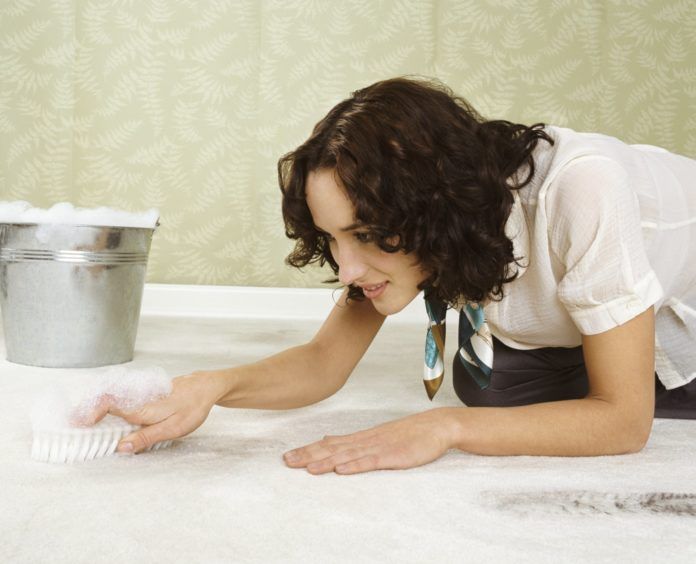Living with cats absolutely guarantees that you will occasionally have pet-produced stains on your upholstery and carpet, and unpleasant odors where you don’t want unpleasant odors to be.
Even the most vigilant of cats can sometimes miss the litter box and leave deposits that require cleanup. This is more likely as your cat ages. And if you live in a multi-cat household or have any intact cats in the house, spraying and urine marking can make your living room smell like the cat’s litterbox instead.
Many Pet Stain Products to Choose From
A trip to the grocery store will give you an idea of the various products available today to remove stains from upholstery and carpets. Most work best on fresh stains, so ideally you’ll stumble upon the problem quickly. Some stains, however can be harder to remove. Some cat owners swear by a mixture of white vinegar and baking soda. The recipe is: two cups of white distilled vinegar, two cups of lukewarm water, four tablespoons of baking soda that you can mix together in a spray bottle. .
Another popular natural solution is a mixture of hydrogen peroxide and baking soda. Mix a cup of baking soda with a half-cup of three percent hydrogen peroxide, along with a teaspoon of dish liquid.
And other cat owners have reported success using tried-and-true (and inexpensive) white vinegar alone. Any brand will be adequate. Dilute it with water for normal odor removal. For spots where the cats repeatedly soil, you can use straight vinegar to soak the area.
What To Do When You Find a Fresh Stain
For new (still wet) stains on carpeted areas and upholstery, you should soak up as much urine or vomit as possible. The more you can remove before it dries — especially from carpet — the easier it will be to remove the odor. Place a thick layer of paper towels on the wet spot, and cover that with a thick layer of newspaper. Stand on this padding for about a minute. Remove the padding and repeat the process until the area is barely damp. Rinse the accident zone with clean, lukewarm water. After rinsing, remove as much of the water as possible by blotting or using a wet vac.
For set stains, you can rent an extractor or wet vac from a local hardware store to remove all traces of heavy stains in carpeting. The machine forces clean water through your carpet and then forces the dirty water back out. When you use these machines, follow the instructions carefully. Don’t use any chemicals with these machines; they work better with plain water.
It’s best to avoid using steam cleaners to remove urine odors from carpet or upholstery. The heat can permanently set the stain and the odor by bonding the protein into any man-made fibers.
Different Types of Cleaners for Cat Odors and Stains
While there are many products on the market that aggressively market themselves as pet stain and odor removers, it’s more often that they are good at masking the odor for people — but cats usually recognize that the odor is still there. That’s why enzyme-based cleaners are popular because they can sometimes break down the odor-causing chemicals left behind by your cats. If not, you may be creating a vicious cycle — your cat trying to cover the old, chemically-masked scent.
THINKSTOCK


According to Nicholas Dodman, BVMS, director of the Animal Behavior Clinic at the Cummings School, a novel product called ZeroOdor is the most effective.
How a Black Light Can Help
You can utilize your own senses to find obvious soiled areas. But you might want to use a black light to discover hidden stains, especially those that are old (but not forgotten). You can purchase one at a home supply store, a pet store or online. Turn out all the lights in the room, and then use the black light to identify the soiled area. Lightly outline the areas with chalk so you can identify them easily when you turn the lights back on.
Add Baking Soda To Your Laundry
For washable items, you should machine wash as usual, adding a small box of baking soda to your regular detergent. It’s best to air dry these items, if possible, so that any lingering stains or odor don’t get “set” during the drying cycle. If you can still see the stain or smell the urine, you should wash the item again before drying.
Before you use any new product, you should do a patch test to make certain that it won’t damage the surface you’re cleaning. Try it in a small corner and wait a day or two until it dries thoroughly to see the results. If there is no damage to colors or fabric when it dries, it is considered safe to use on that material.




